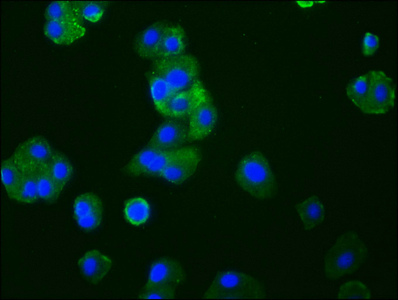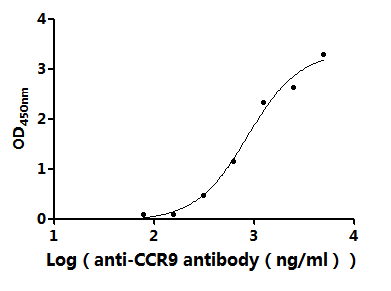The CCR9 recombinant monoclonal antibody is produced by transfecting the antibody DNA gene-vector clones into the cell line for in vitro expression. The antibody DNA gene encodes a synthesized peptide derived from human CCR9 protein. This CCR9 antibody can react with the CCR9 protein of human- and mouse-origin. It is purified through the affinity-chromatography approach. And it is recommended for ELISA, WB, IF, and IP applications.
CCR9 is mainly distributed in immature T lymphocytes and on the surface of intestinal cells, and it plays a role in T lymphocyte development and tissue-specific homing when bound to its specific and CCL25. CCR9 has been found to be highly expressed in a wide range of cancers and has been linked to tumor chemoresistance and metastasis. It is therefore a potential tumor biomarker in diagnosis and therapy.





